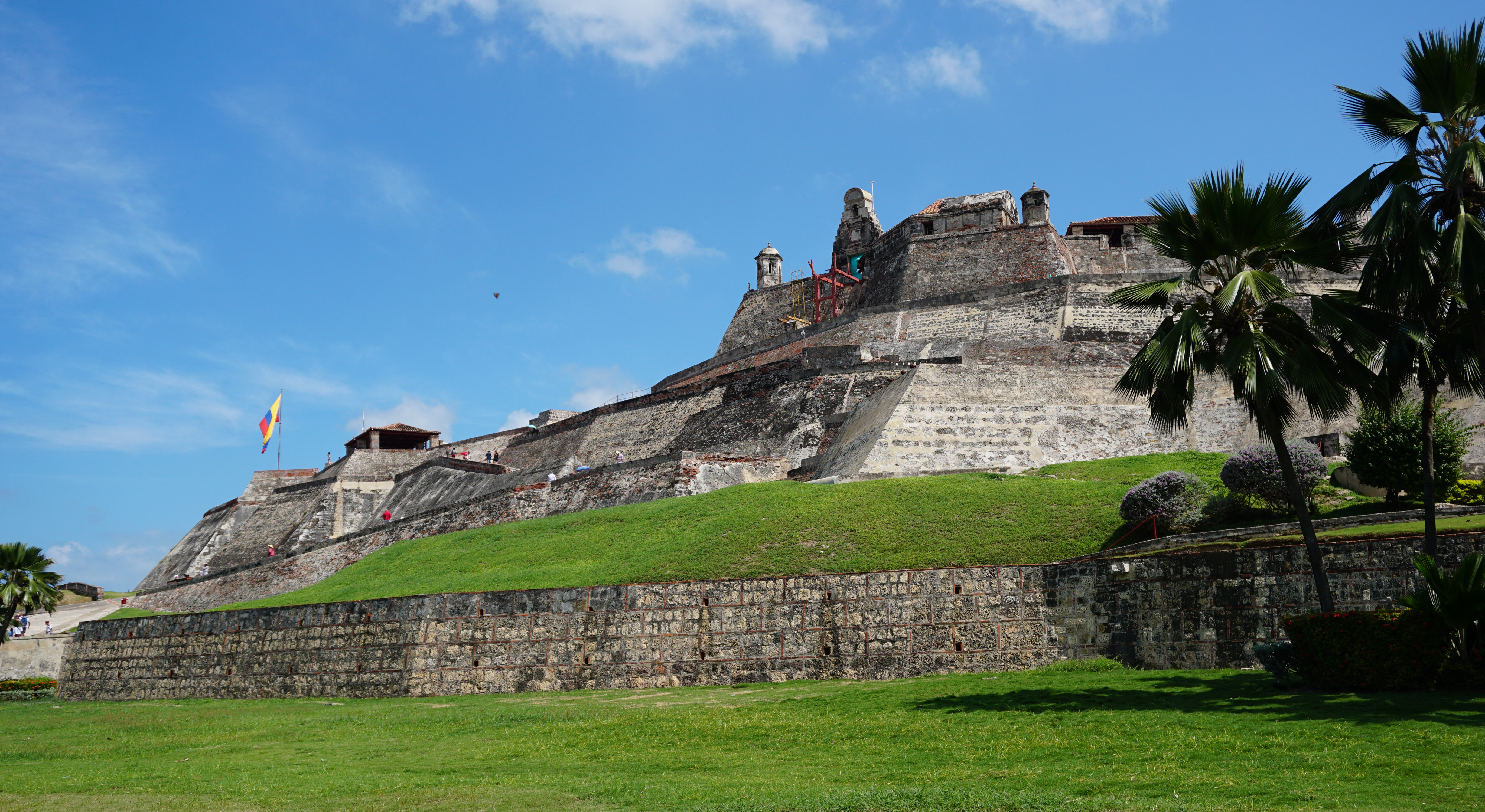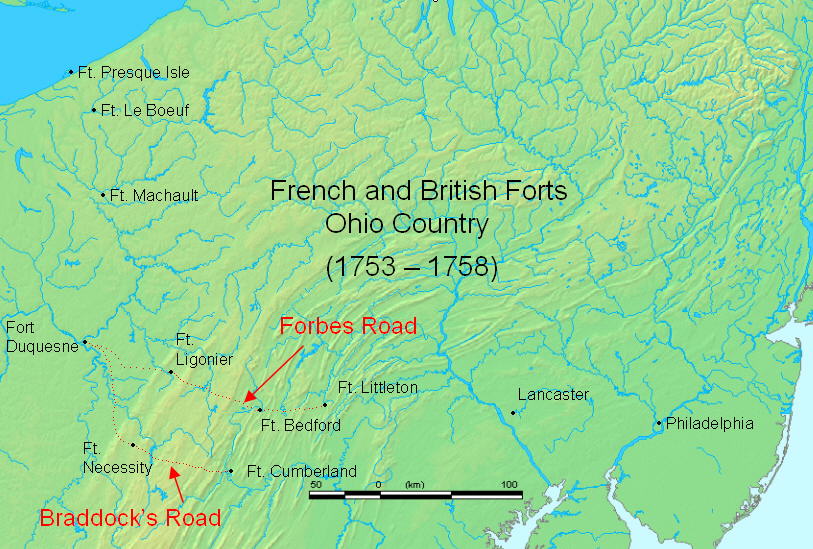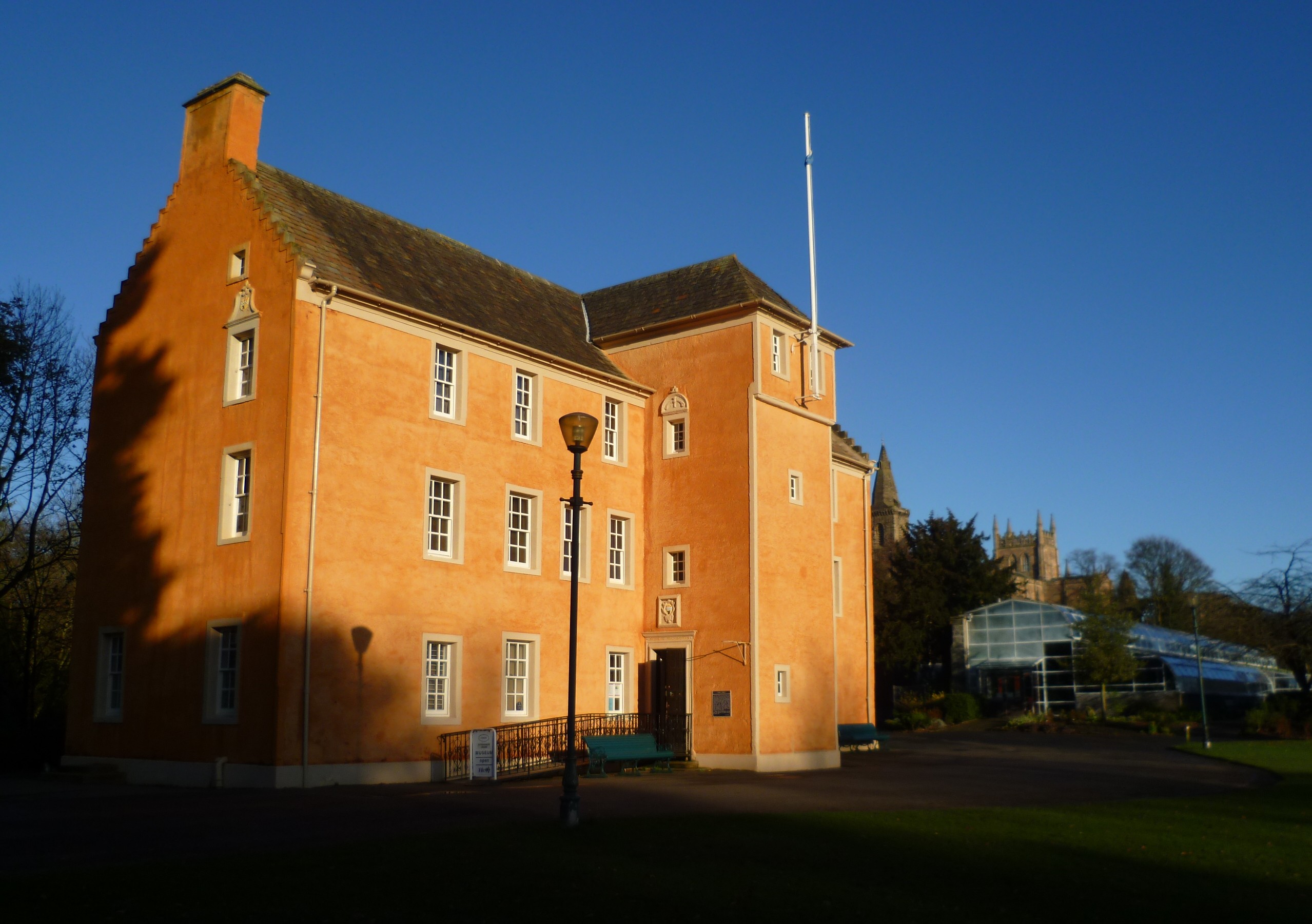|
Fort Juniata Crossing
Fort Juniata Crossing, also known as Fort Juniata or simply Juniata Crossing, was a British French and Indian War era fortification located along the Forbes Road. The fort was located along a strategic ford of the Raystown Branch of the Juniata River about west of the current site of Breezewood, Pennsylvania. It was constructed in the summer of 1758 as part of a string or forts located along the line of supply and communication westward from the British Army's forward base at the frontier settlement of Carlisle as General Forbes’ army pushed westward toward the French garrison at Fort Duquesne. Located about halfway between the British fortifications at Fort Littleton to the east and Fort Bedford to the west, Fort Juniata Crossing protected a vital ford across the Raystown Branch of the Juniata River. As the Juniata was the only major river ford along the road between Carlisle and Fort Duquesne, the site was of particular strategic importance. Smaller and with a smaller gar ... [...More Info...] [...Related Items...] OR: [Wikipedia] [Google] [Baidu] |
French And Indian War
The French and Indian War (1754–1763) was a theater of the Seven Years' War, which pitted the North American colonies of the British Empire against those of the French, each side being supported by various Native American tribes. At the start of the war, the French colonies had a population of roughly 60,000 settlers, compared with 2 million in the British colonies. The outnumbered French particularly depended on their native allies. Two years into the French and Indian War, in 1756, Great Britain declared war on France, beginning the worldwide Seven Years' War. Many view the French and Indian War as being merely the American theater of this conflict; however, in the United States the French and Indian War is viewed as a singular conflict which was not associated with any European war. French Canadians call it the ('War of the Conquest').: 1756–1763 The British colonists were supported at various times by the Iroquois, Catawba, and Cherokee tribes, and the French ... [...More Info...] [...Related Items...] OR: [Wikipedia] [Google] [Baidu] |
Fort Ligonier
Fort Ligonier is a British fortification from the French and Indian War located in Ligonier, Pennsylvania, United States. The fort served as a staging area for the Forbes Expedition of 1758. During the eight years of its existence as a garrison, Fort Ligonier was never taken by an enemy. It served as a post of passage to the new Fort Pitt, and during Pontiac's War of 1763, was a vital link in the British communication and supply lines. It was attacked twice and besieged by the Native Americans, prior to the decisive victory at Bushy Run in August of that year. The fort was decommissioned from active service in 1766. Today, there is a museum next to the reconstructed fort. Inside the museum there are artifacts from the battle. An individual can take a guided tour of the fort, and on Fort Ligonier Days, the fort's cannons are fired. Forbes' campaign French victories over George Washington and Edward Braddock in 1754–55 wrested from Britain control of the strategic forks of the ... [...More Info...] [...Related Items...] OR: [Wikipedia] [Google] [Baidu] |
French And Indian War Forts
French (french: français(e), link=no) may refer to: * Something of, from, or related to France ** French language, which originated in France, and its various dialects and accents ** French people, a nation and ethnic group identified with France ** French cuisine, cooking traditions and practices Fortnite French places Arts and media * The French (band), a British rock band * "French" (episode), a live-action episode of ''The Super Mario Bros. Super Show!'' * ''Française'' (film), 2008 * French Stewart (born 1964), American actor Other uses * French (surname), a surname (including a list of people with the name) * French (tunic), a particular type of military jacket or tunic used in the Russian Empire and Soviet Union * French's, an American brand of mustard condiment * French catheter scale, a unit of measurement of diameter * French Defence, a chess opening * French kiss, a type of kiss involving the tongue See also * France (other) * Franch, a surname * Frenc ... [...More Info...] [...Related Items...] OR: [Wikipedia] [Google] [Baidu] |
Forts In Pennsylvania
A fortification is a military construction or building designed for the defense of territories in warfare, and is also used to establish rule in a region during peacetime. The term is derived from Latin ''fortis'' ("strong") and ''facere'' ("to make"). From very early history to modern times, defensive walls have often been necessary for cities to survive in an ever-changing world of invasion and conquest. Some settlements in the Indus Valley civilization were the first small cities to be fortified. In ancient Greece, large stone walls had been built in Mycenaean Greece, such as the ancient site of Mycenae (famous for the huge stone blocks of its 'cyclopean' walls). A Greek '' phrourion'' was a fortified collection of buildings used as a military garrison, and is the equivalent of the Roman castellum or English fortress. These constructions mainly served the purpose of a watch tower, to guard certain roads, passes, and borders. Though smaller than a real fortress, they acted ... [...More Info...] [...Related Items...] OR: [Wikipedia] [Google] [Baidu] |
Stockade
A stockade is an enclosure of palisades and tall walls, made of logs placed side by side vertically, with the tops sharpened as a defensive wall. Etymology ''Stockade'' is derived from the French word ''estocade''. The French word was derived from the Spanish word ''estacada''. As a frontier outpost It was used as an outpost because it provided cover and was safe to look at things through. As a security fence The troops or settlers would build a stockade by clearing a space of woodland and using the trees whole or chopped in half, with one end sharpened on each. They would dig a narrow trench around the area, and stand the sharpened logs side-by-side inside it, encircling the perimeter. Sometimes they would add additional defence by placing sharpened sticks in a shallow secondary trench outside the stockade. In colder climates sometimes the stockade received a coating of clay or mud that would make the crude wall wind-proof. Builders could also place stones or thick mud lay ... [...More Info...] [...Related Items...] OR: [Wikipedia] [Google] [Baidu] |
American Revolution
The American Revolution was an ideological and political revolution that occurred in British America between 1765 and 1791. The Americans in the Thirteen Colonies formed independent states that defeated the British in the American Revolutionary War (1775–1783), gaining independence from the British Crown and establishing the United States of America as the first nation-state founded on Enlightenment principles of liberal democracy. American colonists objected to being taxed by the Parliament of Great Britain, a body in which they had no direct representation. Before the 1760s, Britain's American colonies had enjoyed a high level of autonomy in their internal affairs, which were locally governed by colonial legislatures. During the 1760s, however, the British Parliament passed a number of acts that were intended to bring the American colonies under more direct rule from the British metropole and increasingly intertwine the economies of the colonies with those of Brit ... [...More Info...] [...Related Items...] OR: [Wikipedia] [Google] [Baidu] |
Henry Bouquet
Henry Bouquet (born Henri Louis Bouquet; 1719 – 2 September 1765) was a Swiss mercenary who rose to prominence in British service during the French and Indian War and Pontiac's War. He is best known for his victory over a Native American force at the Battle of Bushy Run, lifting the siege of Fort Pitt during Pontiac's War. During the conflict Bouquet gained lasting infamy in an exchange of letters with his commanding officer, Jeffery Amherst, who suggested a form of biological warfare in the use of blankets infected with smallpox which were to be distributed to Native Americans. Despite this indictment historians have praised Bouquet for leading British forces in several demanding campaigns on the Western Frontier in which they "protected and rescued" settlers from increasingly frequent attacks. Early life Bouquet was born in Rolle, Switzerland, as the oldest of seven brothers. The son of a Swiss roadhouse owner and his well-to-do wife, he entered military service at ... [...More Info...] [...Related Items...] OR: [Wikipedia] [Google] [Baidu] |
Star Fort
A bastion fort or ''trace italienne'' (a phrase derived from non-standard French, literally meaning ''Italian outline'') is a fortification in a style that evolved during the early modern period of gunpowder when the cannon came to dominate the battlefield. It was first seen in the mid-fifteenth century in Italy. Some types, especially when combined with ravelins and other outworks, resembled the related star fort of the same era. The design of the fort is normally a polygon with bastions at the corners of the walls. These outcroppings eliminated protected blind spots, called "dead zones", and allowed fire along the curtain from positions protected from direct fire. Many bastion forts also feature cavaliers, which are raised secondary structures based entirely inside the primary structure. Origins Their predecessors, medieval fortresses, were usually placed on high hills. From there, arrows were shot at the enemies. The enemies' hope was to either ram the gate or c ... [...More Info...] [...Related Items...] OR: [Wikipedia] [Google] [Baidu] |
Fort Bedford
Fort Bedford was a French and Indian War-era British military fortification located at the present site of Bedford, Pennsylvania. The fort was a star-shaped log fortress erected in the summer of 1758. Background Fort Bedford was constructed during the French and Indian War by British troops under the command of Colonel Henry Bouquet by order of General John Forbes. The fort was one of a string of British forts and blockhouses designed to protect British supply lines on the Forbes Road, a pioneer trail built by the British during their invasion of the Ohio Country and campaign against the French garrison at Fort Duquesne, modern day Pittsburgh. After General Edward Braddock's campaign to take the forks of the Ohio River ended in disaster, General Forbes was placed in command of a new expedition to capture the strategic point guarded by Fort Duquesne. Forbes vowed not to make the same mistakes as his predecessor. Braddock had led a small invasion force launched from western ... [...More Info...] [...Related Items...] OR: [Wikipedia] [Google] [Baidu] |
Forbes Expedition
The Forbes Expedition was a British military expedition to capture Fort Duquesne, led by Brigadier-General John Forbes in 1758, during the French and Indian War. While advancing to the fort, the expedition built the now historic trail, the Forbes Road. The Treaty of Easton served to cause a loss of Native American support for the French, resulting in the French destroying the fort before the expedition could arrive on November 24. Objective Similarly to the unsuccessful Braddock Expedition early in the war, the strategic objective was the capture of Fort Duquesne, a French fort that had been constructed at the confluence of the Allegheny River and the Monongahela River in 1754. The site is now located in Pittsburgh's Golden Triangle in the downtown area. Order of battle Forbes commanded about 6,000 men, including a contingent of Virginians led by George Washington. Forbes, very ill, did not keep up with the advance of his army, but entrusted it to his second in command, Lieu ... [...More Info...] [...Related Items...] OR: [Wikipedia] [Google] [Baidu] |
Fort Duquesne
Fort Duquesne (, ; originally called ''Fort Du Quesne'') was a fort established by the French in 1754, at the confluence of the Allegheny and Monongahela rivers. It was later taken over by the British, and later the Americans, and developed as Pittsburgh in the U.S. state of Pennsylvania. Fort Duquesne was destroyed by the French, prior to British conquest during the Seven Years' War, known as the French and Indian War on the North American front. The British replaced it, building Fort Pitt between 1759 and 1761. The site of both forts is now occupied by Point State Park, where the outlines of the two forts have been laid in brick. Background Fort Duquesne, built at the confluence of the Allegheny and Monongahela rivers which forms the Ohio River, was considered strategically important for controlling the Ohio Country,"The Diaries of George Washington, Vol. 1", Donald Jackson, ed., Dorothy Twohig, assoc. edLibrary of Congress American Memory site/ref> both for settlement ... [...More Info...] [...Related Items...] OR: [Wikipedia] [Google] [Baidu] |
John Forbes (British Army Officer)
John Forbes (5 September 1707 – 11 March 1759) was a Scottish professional soldier who served in the British Army from 1729 until his death in 1759. During the 1754 to 1763 French and Indian War, he commanded the 1758 Forbes Expedition that occupied the French outpost of Fort Duquesne, now Pittsburgh, Pennsylvania. This required the construction of a military trail known as the Forbes Road, which became an important route for settlement of the Western United States. Forbes died in Philadelphia and was buried in the chancel of Christ Church, where his memorial can still be seen. Life John Forbes was born in Dunfermline on 5 September 1707, youngest child of Colonel John Forbes, 1658–1707, who died several months before his birth, and Elizabeth Graham, daughter of an Edinburgh merchant. His uncle, Duncan Forbes (1644-1704), was a prominent supporter of William of Orange and obtained his brother John an army commission. In 1701, Colonel Forbes purchased Pittencri ... [...More Info...] [...Related Items...] OR: [Wikipedia] [Google] [Baidu] |






